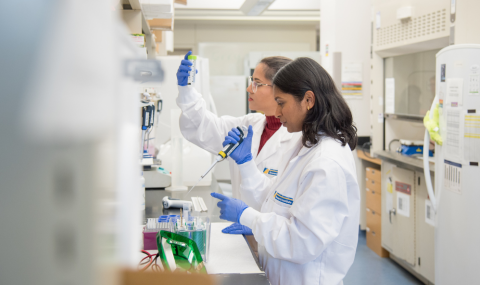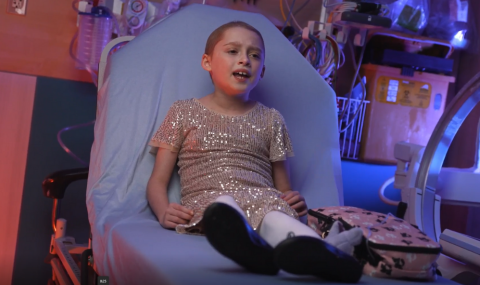A CT scan uses a special x-ray machine which produces an image of a cross-section or slice of the body. The scanner consists of a doughnut-shaped structure, or gantry, through which you pass on a table. As you pass through, the x-ray machine takes pictures all around you at different angles and the computer collects the information to make cross-sectional images. Similar to a slice of bread, the two-dimensional (2D) images show a ‘slice’ of the anatomy. The computer then stacks these slices together for further evaluation.
How to book an appointment
Outpatient CT scans are by pre-booked appointment only. Please check your booking closely to ensure which campus you are scheduled at and at what time of day (morning versus afternoon). A booking notification will go to your requesting doctor, this will include any necessary preparation instructions.
Diabetic devices
Diabetic management devices including glucose sensors, transmitters, receivers and insulin pumps can be damaged by radiation and magnetic fields. Glucose sensors, transmitters, receivers or insulin pumps must be removed immediately prior to your test. Insulin pumps may be restarted following the test. Glucose sensors cannot be reinserted – you must use a new sensor following the test. If you would prefer to reschedule your test, please let us know. For any questions regarding your device, please contact the manufacturer of your device.
What can I expect?
- Any metal in the area degrades the quality of your CT. For this reason, you may be asked to change into hospital clothing.
- Your Doctor may have requested a scan where the Radiologist deemed it necessary to have oral contrast (a drink) before your scan. This is most common with the abdomen and/or pelvis scans. While you are drinking you will be waiting an hour or more before starting the scanning process. The scanning process will then take about 20 minutes. The total time in the department is normally around 90 minutes.
- Without the drink, the process usually takes about 20 minutes.
- Our Radiologist reading the CT may also ask for you to have an injection for the scan. It is a special dye (contrast media) that is used to improve how we see blood vessels, organs and other structures. This will require a small intravenous (IV) to inject the contrast through for the scan. The Technologist preparing you for your procedure will explain this further to you.
- The Technologists strive to start each scan on time, but emergency patients and other unforeseen events may cause a delay.
Is it your child coming for a test?
The Child Life Program strives to meet the psychosocial and emotional needs of children and youth throughout their health care journeys. They help them adjust to and understand hospitalization, medical procedures, illness and injury. They are commonly involved with procedures such as CT scans.
How to find CT:
Hours of operation and phone number for Computed Tomography (CT) at University Hospital
- Outpatient Hours of Operation are Monday to Friday from 7:00 a.m. (0700) to 7:00 p.m. (1900)
- Contact phone number before 4:00 p.m. (1600): 519-685-8500 extension 33226
- Contact Patient Registration at phone number after 4:00 p.m. (1600): 519-685-8500 extension. 33191
Hours of operation and phone number for Computed Tomography (CT) at Victoria Hospital are
- Outpatient Hours of Operation are Monday to Friday from 7:00 a.m. (0700) to 11:00 p.m. (2300)
- Contact phone number is 519-685-8500 extension 57474
Directions to Computed Tomography (CT) at University Hospital
If your arrival time is Monday to Friday from 6:30 a.m. (6:30) to 4:00 p.m. (16:00)
- Enter through the main entrance at the front of the hospital.
- Take the main elevators to the 2nd floor and follow the Radiology construction signs to check in at Radiology or X-ray temporary location.
If your arrival time is Monday to Friday from 4:00 p.m. (16:00) to 8:00 p.m. (20:00) or Saturday and Sunday from 8:00 a.m. (8:00) to 8:00 p.m. (20:00)
- Enter through the main entrance at the front of the hospital.
- Check in at Patient Registration on the first floor. Patient Registration can be found directly to your right when you enter through the main entrance. It is right of the information desk in the main lobby. After being registered please proceed to the first floor CT scanner (room A1−184). It is in the direction of the Emergency Department.
If your arrival time is Monday to Friday after 8:00 p.m. (20:00)
- You must enter through the security entrance, Entrance A, at the hospital's north end about 100 feet left of the Emergency department entrance. When you enter through the door, take the long hallway until you see the signs to turn left for the lobby and main elevators.
- Check in with Patient Registration in the main lobby.
- Proceed to the first floor CT scanner (room A1−184). It is in the direction of the Emergency Department, close to entrance.
Directions to Computed Tomography (CT) at Victoria Hospital
If your appointment time is any day from 5:00 a.m. (5:00) to 9:00 p.m. (21:00)
- Enter through Entrance D off Commissioners Road and take the D elevators to Level 1.
- Follow signs to "CT/MRI" department waiting room at D1−C26 to register.
If your appointment time is any day from 9:00 p.m. (21:00) to 5:00 a.m. (5:00)
- Enter the hospital off Baseline Road, turn right onto Dagnone drive in front of the Thames Valley Children´s Centre.
- Pass the north tower (building B) and park in the visitor parking garage (P8) on the left.
- Take the parking garage elevators to Level G and enter the hospital through the doors labeled B3 opposite the garage exit under the walkway.
- Once in the main lobby area, follow the signs to zone C. You will exit the lobby area toward zone C left of the Pediatric Family Resource Centre and through the double doors right of the elevators.
- Continue following signs to zone C and CT/MRI (room D1−C26).
How to access your Computed Tomography (CT) images
For information on accessing your Computed Tomography images, visit Accessing Your Diagnostic Images.



